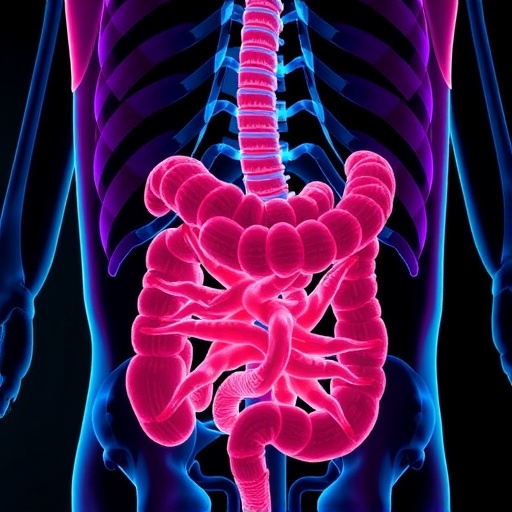
In the realm of advanced cardiac care, the management of left ventricular assist devices (LVADs) has emerged as a focal point of innovation and clinical research. The mobility and functionality of these devices have improved the prognosis for patients with severe heart failure, yet they also present unique challenges that necessitate carefully thought-out strategies for driveline management. A pivotal study recently published in the Journal of Artificial Organs has delved into the clinical outcomes associated with modified LVAD driveline management techniques, promising to enhance our understanding of this crucial aspect of patient care.
Driveline management is integral to the overall functionality of an LVAD, as it connects the device to an external power source. However, this driveline can serve as a potential conduit for infections, which significantly complicates patient recovery and long-term outcomes. The researchers, led by Dr. S. Imaoka and his colleagues, have undertaken a comprehensive analysis of modified driveline management strategies to mitigate these risks while preserving optimal device performance. This exploration is particularly relevant in the context of the rising number of patients with heart failure who are turning to mechanical circulatory support as a viable treatment option.
One of the cornerstones of the study is the incorporation of innovative materials and designs within the LVAD driveline. The researchers have assessed various modifications aimed at enhancing the biocompatibility and antimicrobial properties of driveline components. These changes are not merely theoretical; they are grounded in rigorous clinical experimentation, reflecting a burgeoning recognition of the importance of materials science in medical device manufacturing. The implications of such modifications could be revolutionary, offering a pathway to lowering infection rates and improving overall patient outcomes.
Moreover, the study highlights the importance of patient education and self-management in the context of LVAD therapy. Driveline care extends beyond the clinical setting, as patients are often required to take an active role in maintaining their device. The researchers emphasize clear communication strategies that empower patients to recognize potential complications early and respond appropriately. Enhanced awareness among patients can lead to faster interventions, which is critical given the time-sensitive nature of infections related to LVADs. This multifaceted approach may significantly influence long-term patient morale and adherence to therapy.
In addition to addressing clinical outcomes, the study provides an extensive overview of the types of infections associated with LVADs. By categorizing these infections and understanding their various etiologies, health professionals can develop tailored strategies for prevention and management. The identification of risk factors is paramount; for instance, maintaining skin integrity around the driveline exit site can drastically reduce the incidence of localized infections. Furthermore, insights gleaned from the study may inform future protocols and guidelines for the care of patients with LVADs.
The importance of timing in the management of LVAD drivelines cannot be overstated. The researchers discuss the significance of promptly addressing any abnormalities or concerns related to the driveline. Delayed responses to complications can have detrimental effects on patient outcomes, underscoring the need for immediate access to healthcare resources. Integrating real-time monitoring systems that alert both patients and healthcare providers can usher in a new era of responsive care, ultimately fostering a proactive healthcare environment.
Social and psychological aspects of living with an LVAD are also touched upon in the study. For many patients, the presence of a foreign device can lead to feelings of anxiety or social isolation. By utilizing a holistic approach in conjunction with their physical interventions, healthcare providers may not only improve clinical outcomes but also enhance the quality of life for individuals living with these devices. Support groups and counseling can play essential roles in mitigating the mental health challenges that accompany extensive medical treatment.
The data extracted from the study underscores that continuous quality improvement initiatives are essential for advancing LVAD technology and patient care. Institutions dedicated to mechanical circulatory support can utilize these findings to benchmark their practices against the latest evidence-based outcomes. This information not only serves to empower patients and healthcare practitioners alike but also provides a foundation for further research aimed at refining LVAD techniques and technologies.
As the landscape for heart failure management evolves, the insights drawn from this study place critical importance on the intersection of technology, patient care, and clinical outcomes. The research elucidates how scientific advancements can lead to tangible improvements in patient health, offering a more promising future for those afflicted with severe cardiac conditions. By focusing on the intricacies of driveline management, future research efforts may address new frontiers in mechanical support, ensuring that patients receive the most effective and comprehensive care possible.
Ultimately, the research conducted by Imaoka and his team aligns with the ongoing movement toward personalized medicine. Individualized approaches to managing LVAD drivelines—integrating patient preferences, clinical findings, and device innovations—could redefine standards of care. As such practices become standardized, they have the potential to significantly influence outcomes on a global scale, promoting better survival rates and overall patient well-being in advanced heart failure management.
As we navigate the complex world of cardiology, it is crucial to recognize the interconnectedness of technology, patient education, and clinical intervention. By building a robust framework around LVAD driveline management, healthcare professionals can enhance patient safety and quality of life while minimizing the risks associated with this life-saving technology. The ongoing research and advancements in this field echo a larger movement towards better device management and heightened awareness for patients and providers alike.
In conclusion, the study conducted by Dr. S. Imaoka and colleagues not only sheds light on modifications to LVAD driveline management but also exemplifies the critical integration of patient-focused strategies, technological advancements, and clinical vigilance. The dialogue it sparks can pave the way for a more dynamic and responsive healthcare system, ultimately transforming the paradigm for those living with mechanical circulatory support as part of their heart failure journey.
Subject of Research: Modified left ventricular assist device driveline management
Article Title: Clinical outcomes of modified left ventricular assist device driveline management
Article References:
Imaoka, S., Kashiyama, N., Yoshioka, D. et al. Clinical outcomes of modified left ventricular assist device driveline management.
J Artif Organs 28, 207–215 (2025). https://doi.org/10.1007/s10047-024-01482-8
Image Credits: AI Generated
DOI: https://doi.org/10.1007/s10047-024-01482-8
Keywords: LVAD, driveline management, heart failure, patient outcomes, infection prevention, materials science.
Tags: advanced cardiac care technologiesclinical outcomes of LVADsDr. S. Imaoka research studydriveline infection risksenhanced LVAD functionalityheart failure treatment innovationsinfection prevention in LVAD patientsLVAD driveline managementmechanical circulatory support strategiesmodified LVAD management techniquespatient recovery from heart failureprognosis improvement for heart failure patients




